Clancy Tucker's Blog, page 228
March 18, 2016
19 March 2016 - CLANCY TUCKER PHOTOGRAPHY
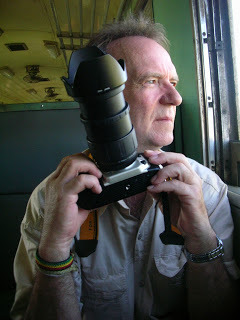
CLANCY TUCKERPHOTOGRAPHY
G'day folks,
Time to expose another side of my talents - such as they are.
YELLOW






WHITE



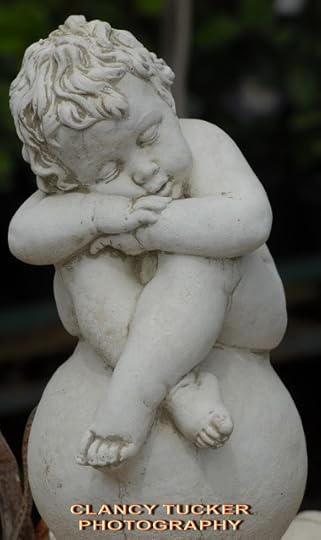
COBWEBS


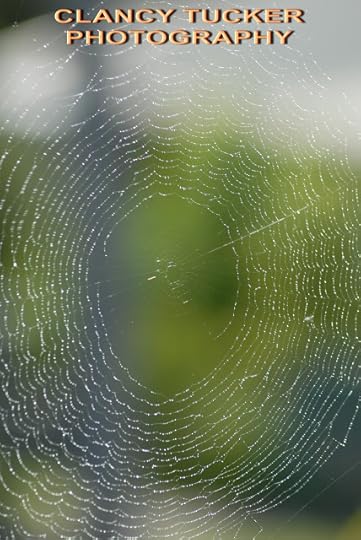
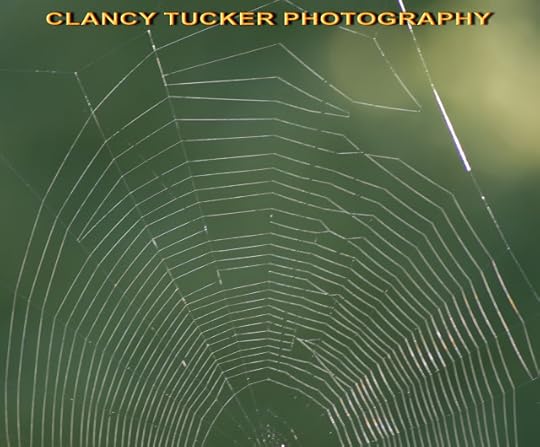
CREATURES







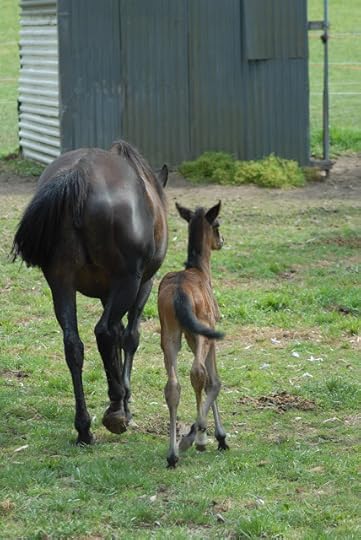


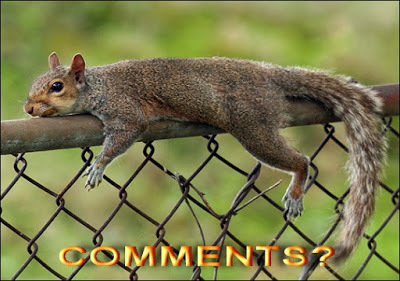
Clancy's comment: There ya go, folks. Besides kids, I love to photograph cobwebs and lightning. Heaps more to come.
I'm ...
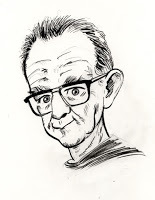

Published on March 18, 2016 15:33
March 17, 2016
18 March 2016 - QUOTES FROM WINSTON CHURCHILL
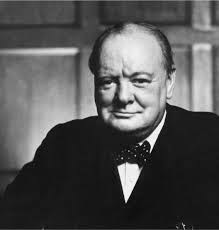
QUOTES FROMWINSTON CHURCHILL
G'day folks,
Welcome to some quotes from another Prime Minister. This one came from the United Kingdom, but there seems to be a similarity in the manner in which they express themselves. Maybe they go to a PM school, eh?

40) “It is no use saying, ‘We are doing our best.’ You have got to succeed in doing what is necessary.”
39) “I may be drunk, Miss, but in the morning I will be sober and you will still be ugly.”
38) “To build may have to be the slow and laborious task of years. To destroy can be the thoughtless act of a single day.”
37) “Success is not final, failure is not fatal: it is the courage to continue that counts.”
36) "To improve is to change; to be perfect is to change often."
35) “In war, resolution; in defeat, defiance; in victory, magnanimity.”
34) “Nothing in life is so exhilarating as to be shot at without result.”
33) “This is no time for ease and comfort. It is time to dare and endure.”
32) “When you have to kill a man, it costs nothing to be polite.”
31) “A lie gets halfway around the world before the truth has a chance to get its pants on.”
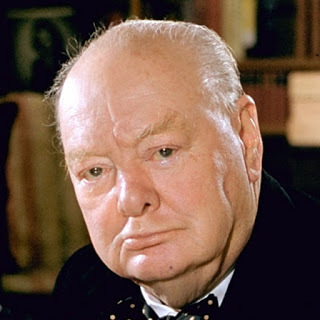
30) "We contend that for a nation to tax itself into prosperity is like a man standing in a bucket and trying to lift himself up by the handle."
29) Lady Astor: “Winston, if I were your wife I’d put poison in your coffee.”
Winston Churchill: “Nancy, if I were your husband I’d drink it.”
28) “When the eagles are silent, the parrots begin to jabber.”
27) “If you have an important point to make, don’t try to be subtle or clever. Use a pile driver. Hit the point once. Then come back and hit it again. Then hit it a third time-a tremendous whack.”
26) “Success consists of going from failure to failure without loss of enthusiasm.”
25) “Character may be manifested in the great moments, but it is made in the small ones.”
24) “Men occasionally stumble over the truth, but most of them pick themselves up and hurry off as if nothing has happened.”
23) “If Hitler invaded hell I would make at least a favourable reference to the devil in the House of Commons.”
22) “To jaw-jaw is always better than to war-war.”
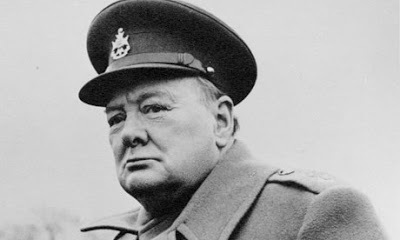
21) “Socialists think profits are a vice; I consider losses the real vice.”
20) “The Americans will always do the right thing… after they’ve exhausted all the alternatives.”
19) “An appeaser is one who feeds a crocodile—hoping it will eat him last.”
18) "Courage is the first of human qualities because it is the quality that guarantees all the others."
17) “If you are going through hell, keep going.”
16) "Some see private enterprise as a predatory target to be shot, others as a cow to be milked, but few are those who see it as a sturdy horse pulling the wagon."
15) “The Germans have received back again that measure of fire and steel which they have so often meted out to others. Now this is not the end. It is not even the beginning of the end. But it is, perhaps, the end of the beginning.”
14) "You have enemies? Good. That means you’ve stood up for something, sometime in your life."
13) “Never in the field of human conflict was so much owed by so many to so few.”
12) “To have the United States at our side was to me the greatest joy. Now at this very moment I knew the United States was in the war, up to the neck and in to the death. So we had won after all!…Hitler’s fate was sealed. Mussolini’s fate was sealed. As for the Japanese, they would be ground to powder.”
11) “If you have ten thousand regulations you destroy all respect for the law.”
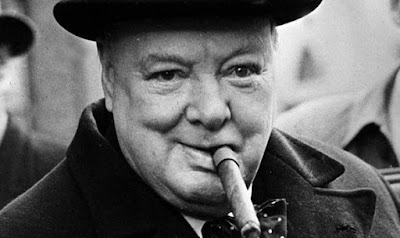
10) “What kind of a people do they (Japan) think we are? Is it possible they do not realise that we shall never cease to persevere against them until they have been taught a lesson which they and the world will never forget?”
9) “I would say to the House, as I said to those who have joined this government: I have nothing to offer but blood, toil, tears and sweat.”
8) "It has been said that democracy is the worst form of government except all the others that have been tried."
7) “We (The British) have not journeyed across the centuries, across the oceans, across the mountains, across the prairies, because we are made of sugar candy.”
6) “You ask, What is our policy? I will say; ‘It is to wage war, by sea, land and air, with all our might and with all the strength that God can give us: to wage war against a monstrous tyranny, never surpassed in the dark lamentable catalogue of human crime. That is our policy.’ You ask, What is our aim? I can answer with one word: Victory—victory at all costs, victory in spite of all terror, victory however long and hard the road may be; for without victory there is no survival.”
5) “If you will not fight for right when you can easily win without blood shed; if you will not fight when your victory is sure and not too costly; you may come to the moment when you will have to fight with all the odds against you and only a precarious chance of survival. There may even be a worse case. You may have to fight when there is no hope of victory, because it is better to perish than to live as slaves.”
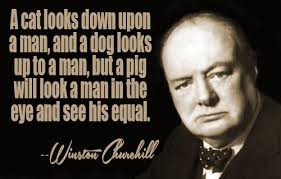
4) “The inherent vice of capitalism is the unequal sharing of blessings; the inherent virtue of socialism is the equal sharing of miseries.”
3) “We shall not flag or fail. We shall go on to the end. We shall fight in France, we shall fight on the seas and the oceans, we shall fight with growing confidence and growing strength in the air, we shall defend our island, whatever the cost may be. We shall fight on the beaches, we shall fight on the landing grounds, we shall fight in the fields and in the streets, we shall fight in the hills; we shall never surrender.”
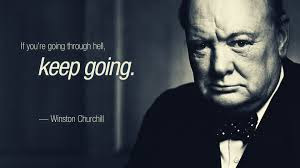
2) “Hitler knows that he will have to break us in this island or lose the war. If we can stand up to him, all Europe may be free and life of the world may move forward into broad, sunlit uplands. But if we fall, then the whole world, including the United States, including all that we have known and cared for, will sink into the abyss of a new Dark Age made more sinister, and perhaps more protracted, by the lights of perverted science. Let us therefore brace ourselves to our duties, and so bear ourselves that, if the British Empire and its Commonwealth lasts for a thousand years, men will still say, ‘This was their finest hour!’”
1) “Never give in–never, never, never, never, in nothing great or small, large or petty, never give in except to convictions of honour and good sense. Never yield to force; never yield to the apparently overwhelming might of the enemy.”

Clancy's comment: There are some very humorous ones here. Some are also cutting, but spot on.
I'm ...

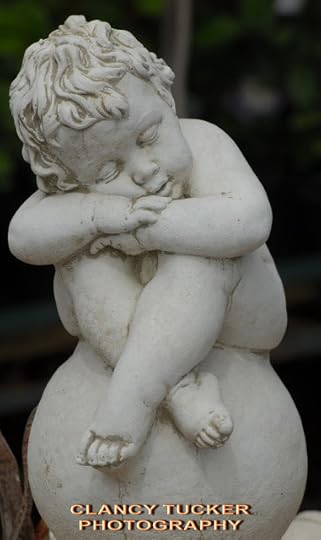
Published on March 17, 2016 16:10
March 16, 2016
17 March 2016 - THE ORIGINS OF McDONALD'S
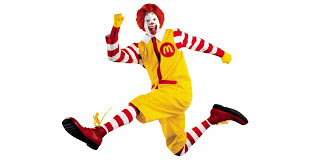
THE ORIGINSOF McDONALD'S
G'day folks,
Ever bought a hamburger at McDonald's? What did you think of it? McDonald's is the world's largest chain of hamburger fast food restaurants, serving around 68 million customers daily in 119 countries across 35,000 outlets. Ever thought about how the great empire began? Read on ...
As the Great Depression strangled the mill towns of their native New Hampshire, a pair of young brothers headed west with dreams of making it big as Hollywood producers. The only work that Richard and Maurice McDonald could ever land in the film industry, however, was pushing around movie sets, and the small cinema they opened in suburban Los Angeles fizzled.
Thirty-seven-year-old Maurice and 31-year-old Richard had to wonder if their hopes of becoming millionaires by the time they turned 50 were just delusions as they opened a tiny drive-in restaurant in San Bernardino, California, on May 15, 1940. Little did they know that their new restaurant would be the meal ticket to fulfilling their American dreams.
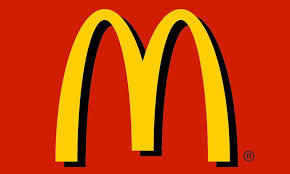
The original McDonald’s at the corner of 14th and E Streets, just a few blocks from historic Route 66, bore little resemblance to today’s ubiquitous “golden arches,” beginning with the menu. Hard as it may be to believe, the future fast-food giant started out by serving up barbecue slow-cooked for hours in a pit stocked with hickory chips imported from Arkansas. The feature item at McDonald’s Famous Bar-B-Q was a barbecued beef, ham or pork sandwich with french fries for 35 cents. The eclectic 25-item menu included everything from tamales and chili to peanut butter and jelly sandwiches to ham and beaked beans. The 25-cent “aristocratic hamburger” sounded like an offering better suited for Burger King.
The octagon-shaped drive-in barbecue joint lacked inside seating and sported a few stools at its exterior counters, but female carhops in majorette boots and short skirts served most customers who pulled into its parking lot. As the brothers’ business caught on, sales topped $200,000 a year, and as many as 125 cars filled its parking lot on weekend.
After World War II, drive-in competition in San Bernardino grew, and the McDonalds discovered something surprising about their barbecue restaurant—80 percent of their sales came from hamburgers. “The more we hammered away at the barbecue business, the more hamburgers we sold,” said Richard McDonald, according to John F. Love’s book “McDonald’s: Behind the Arches.”
The brothers closed their doors for three months and overhauled their business as a self-service restaurant where customers placed their orders at the windows. They fired their 20 carhops and ditched their silverware and plates for paper wrappings and cups so that they no longer needed a dishwasher. According to Love, they simplified their menu to just nine items—hamburgers, cheeseburgers, three soft drink flavors in one 12-ounce size, milk, coffee, potato chips and pie.
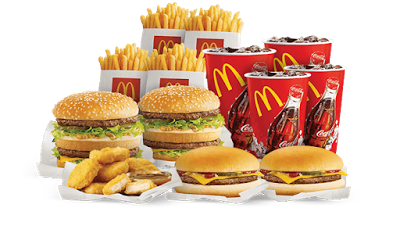
“Our whole concept was based on speed, lower prices and volume,” Richard McDonald said. Taking a cue from Henry Ford’s assembly line production of automobiles, the McDonald brothers developed the “Speedee Service System” and mechanized the kitchen of their roadside burger shack. Each of its 12-person crew specialized in specific tasks, and much of the food was preassembled. This allowed McDonald’s to prepare its food quickly and even ahead of the time when an order was placed. All hamburgers were served with ketchup, mustard, onions and two pickles, and any customers who wanted food prepared their way would have to wait. “You make a point of offering a choice and you’re dead,” Richard McDonald told the Chicago Tribune in 1985, “the speed’s gone.”
According to Love, the first customer at the newly reopened McDonald’s was a 9-year-old girl ordering a bag of hamburgers. The retooled restaurant struggled at first, though, and fired carhops heckled the brothers. Once McDonald’s replaced potato chips with french fries and introduced triple-thick milkshakes, however, the business began to take off with families and businessmen drawn by the cheap, 15-cent hamburgers and low-cost menu.
With labor costs slashed and revenue growing to $350,000 a year by the early 1950s, the McDonald brothers saw their profits double. They had already established a handful of franchises in California and Arizona by the time a milkshake mixer salesman named Ray Kroc visited San Bernardino in 1954. Kroc couldn’t understand why the McDonalds could possibly need eight of his Multi-Mixers, capable of making 48 milkshakes at once, for just one location until he set eyes on the operation.

Seeing the potential in the business, the salesman quickly became the buyer. Kroc bought the rights to franchise the brothers’ restaurants across the country, and in 1955 he opened his first McDonald’s in Des Plaines, Illinois.
The relationship between Kroc and the McDonald brothers grew very contentious as the aggressive salesman and the conservative Yankees had different philosophies about how to run their business. Kroc chafed at the requirement that he receive a registered letter from the McDonalds to make any changes to the retail concept—something the brothers were reluctant to do. “It was almost as though they were hoping I would fail,” Kroc wrote in his 1977 autobiography, “Grinding It Out.”
In 1961, Kroc purchased the company from the McDonald brothers for $2.7 million. While the name of the chain may have been McDonald’s, the face of the restaurants quickly became Kroc’s. Plaques with his likeness were mounted on the walls of many franchises with a description of how “his vision, persistence and leadership have guided McDonald’s from one location in Des Plaines, Illinois to the world’s community restaurant.”
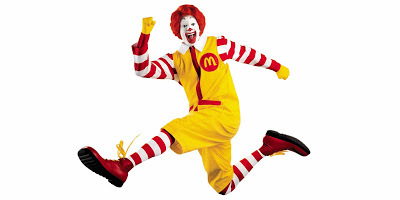
The brothers who lent their name to the business and pioneered the fast-food concept faded to the background. After selling the business, the founders kept their original San Bernardino restaurant, to the annoyance of Kroc, which they renamed “Big M,” with the golden arches on the marquee sharpened to form a giant letter “M.” To gain his revenge, Kroc opened a McDonald’s around the block that eventually drove the brothers out of business.
The original McDonald’s was torn down in the 1970s and replaced by a nondescript building that housed the San Bernardino Civic Light Opera before becoming the headquarters of another fast-food chain, Juan Pollo Chicken, which operates a small unofficial museum with McDonald’s artifacts inside. The McDonald brothers may finally get their Hollywood moment next year in the feature film “The Founder,” although Kroc, played by Michael Keaton, is slated to be the lead character in the story of the global growth of McDonald’s.

Clancy's comment:Can't say I've had many of their hamburgers, maybe 10, but I bet millions around the world would find that hard to believe.
I'm ...

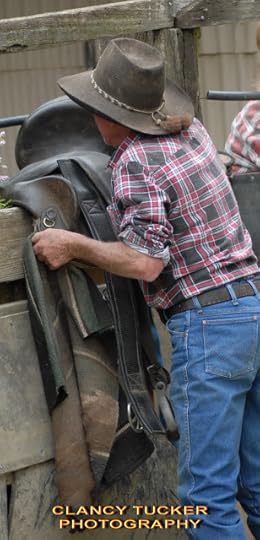
Published on March 16, 2016 16:19
March 15, 2016
16 March 2016 - STUNNING NATURE

STUNNING NATURE
G'day folks,
Nature is certainly stunning. Check out these incredible flowers, photographed by clever photographers.



















Clancy's comment: Mm ... And we humans think we are pretty smart - not! WOW!
I'm ...


Published on March 15, 2016 15:46
March 14, 2016
15 March 2016 - TOP TIPS
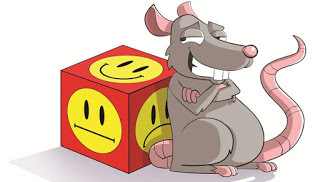
TOP TIPS
G'day folks,
It must be that time again. Check out these wise pearls of wisdom.
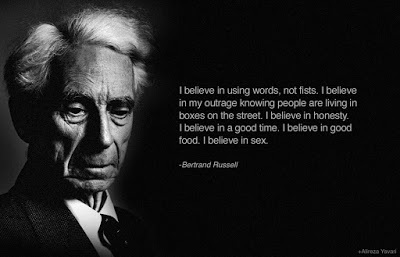



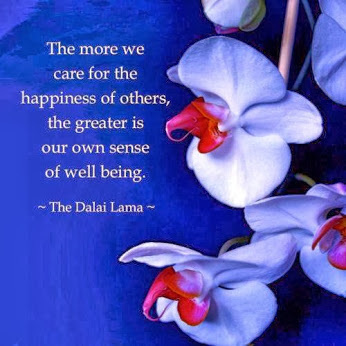


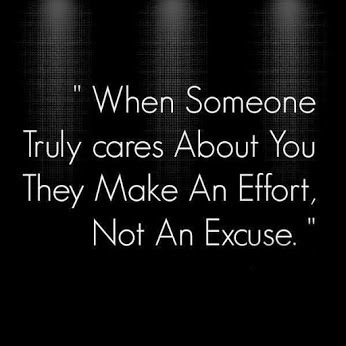



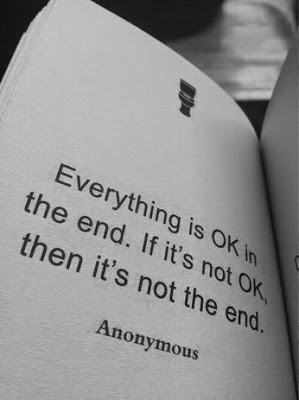



Clancy's comment: Loved the divorce one.
I'm ...

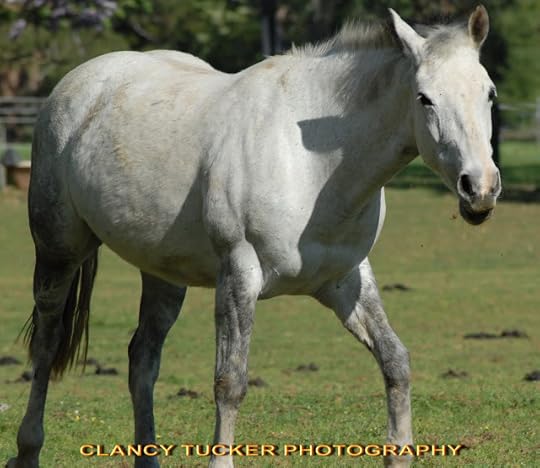
Published on March 14, 2016 15:26
March 13, 2016
14 March 2016 - LOUIS BRAILLE

LOUIS BRAILLE
G'day folks,
Louis Braille was a French educator and inventor of a system of reading and writing for use by the blind or visually impaired. His system remains known worldwide simply as braille.
Louis Braille invented a system of raised dots that enables blind people to read and write. His system is the globally accepted code for those with visual impairments.
Synopsis
Louis Braille was born on January 4, 1809 in Coupvray, France. The son of a harness-maker, Braille was blinded by an accident when he was three. Educated at the National Institute for Blind Youth in Paris, Braille developed a raised-dot code that enabled blind people to read and write. Although his system was in limited use during his lifetime, it has since been accepted globally. Louis Braille died in 1852.
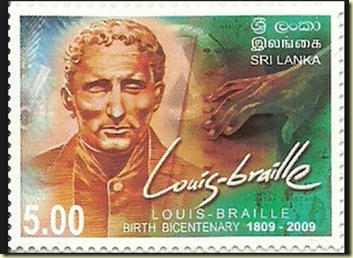
Early Life and Education
Louis Braille was born on January 4, 1809, in Coupvray, France, the fourth child of Simon-René and Monique Braille. Simon-René Braille made harnesses, saddles and other horse tack.
When Braille was three years old, he injured one of his eyes with an awl (a sharp tool used to make holes in leather). Both his eyes eventually became infected, and by the time Braille was five, he was completely blind. Although there were few options for blind people at that time, Braille's parents wanted their son to be educated. He attended school in their village and learned by listening. An attentive student, when he was 10 years old, he received a scholarship to attend the National Institute for Blind Youth in Paris.
The National Institute was the first school of its kind, founded by Valentin Haüy to educate blind students. At the school, Louis learned both academic and vocational skills. He also met Charles Barbier, who while serving In the French army, invented a code that used different combinations of 12 raised dots to represent different sounds. Barbier called the system sonography. Those who could not see would decode the dots by touching them. Its purpose had been for soldiers to communicate silently at night, but since it did not succeed as a military tool, Barbier thought the system might be useful for blind individuals.
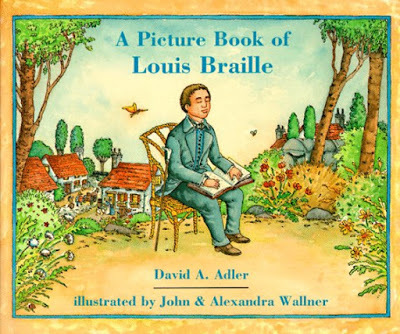
Educator and Inventor
Louis Braille was one of many people at the school who found Barbier’s system promising; but he also discovered its shortcomings. It was quite complex (soldiers had had difficulty learning it) and it was based on sounds rather than letters. Braille spent three years—from ages 12 to 15—developing a much simpler system. His system had only six dots — three dots lined up in each of two columns. He assigned different combinations of dots to different letters and punctuation marks, with a total of 64 symbols.
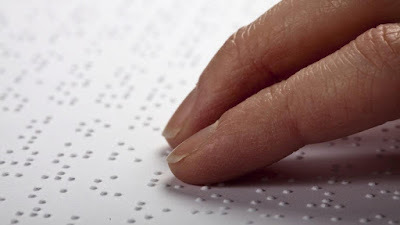
Did you know?
Helen Keller said of Louis Braille, "In our way, we, the blind, are as indebted to Louis Braille as mankind is to Gutenberg."
In 1829, Louis Braille published Method of Writing Words, Music, and Plain Songs by Means of Dots for Use by the Blind and Arranged for Them. He became an apprentice teacher at the National Institute for Blind Youth when he was 19, and then a teacher when he was 24. In 1837, the school published the first book in braille. However, Braille’s system proved to be controversial at the institute. The school’s director, Alexandre François-René Pignier, had supported using braille, but Pierre-Armand Dufau banned it when he became director of the school in 1840. Nonetheless, by 1850, when tuberculosis forced Louis Braille to retire from teaching, his six-dot method was well on its way to widespread acceptance.
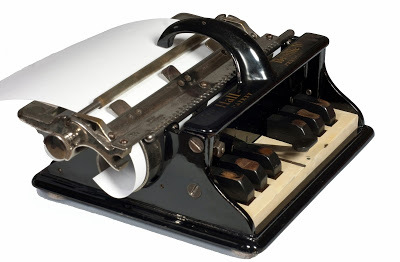
Louis Braille died of his illness on January 6, 1852, in Paris, France, at the age of 43.
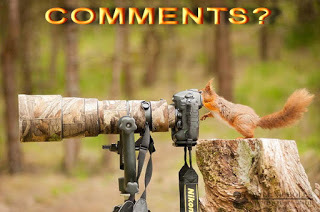
Clancy's comment: Yet another clever man died early.
I'm ...


Published on March 13, 2016 15:03
15 March 2016 - LOUIS BRAILLE

LOUIS BRAILLE
G'day folks,
Louis Braille was a French educator and inventor of a system of reading and writing for use by the blind or visually impaired. His system remains known worldwide simply as braille.
Louis Braille invented a system of raised dots that enables blind people to read and write. His system is the globally accepted code for those with visual impairments.
Synopsis
Louis Braille was born on January 4, 1809 in Coupvray, France. The son of a harness-maker, Braille was blinded by an accident when he was three. Educated at the National Institute for Blind Youth in Paris, Braille developed a raised-dot code that enabled blind people to read and write. Although his system was in limited use during his lifetime, it has since been accepted globally. Louis Braille died in 1852.

Early Life and Education
Louis Braille was born on January 4, 1809, in Coupvray, France, the fourth child of Simon-René and Monique Braille. Simon-René Braille made harnesses, saddles and other horse tack.
When Braille was three years old, he injured one of his eyes with an awl (a sharp tool used to make holes in leather). Both his eyes eventually became infected, and by the time Braille was five, he was completely blind. Although there were few options for blind people at that time, Braille's parents wanted their son to be educated. He attended school in their village and learned by listening. An attentive student, when he was 10 years old, he received a scholarship to attend the National Institute for Blind Youth in Paris.
The National Institute was the first school of its kind, founded by Valentin Haüy to educate blind students. At the school, Louis learned both academic and vocational skills. He also met Charles Barbier, who while serving In the French army, invented a code that used different combinations of 12 raised dots to represent different sounds. Barbier called the system sonography. Those who could not see would decode the dots by touching them. Its purpose had been for soldiers to communicate silently at night, but since it did not succeed as a military tool, Barbier thought the system might be useful for blind individuals.

Educator and Inventor
Louis Braille was one of many people at the school who found Barbier’s system promising; but he also discovered its shortcomings. It was quite complex (soldiers had had difficulty learning it) and it was based on sounds rather than letters. Braille spent three years—from ages 12 to 15—developing a much simpler system. His system had only six dots — three dots lined up in each of two columns. He assigned different combinations of dots to different letters and punctuation marks, with a total of 64 symbols.

Did you know?
Helen Keller said of Louis Braille, "In our way, we, the blind, are as indebted to Louis Braille as mankind is to Gutenberg."
In 1829, Louis Braille published Method of Writing Words, Music, and Plain Songs by Means of Dots for Use by the Blind and Arranged for Them. He became an apprentice teacher at the National Institute for Blind Youth when he was 19, and then a teacher when he was 24. In 1837, the school published the first book in braille. However, Braille’s system proved to be controversial at the institute. The school’s director, Alexandre François-René Pignier, had supported using braille, but Pierre-Armand Dufau banned it when he became director of the school in 1840. Nonetheless, by 1850, when tuberculosis forced Louis Braille to retire from teaching, his six-dot method was well on its way to widespread acceptance.

Louis Braille died of his illness on January 6, 1852, in Paris, France, at the age of 43.

Clancy's comment: Yet another clever man died early.
I'm ...


Published on March 13, 2016 15:03
March 12, 2016
13 March 2016 - FACTS ON THE U.S. BILL OF RIGHTS
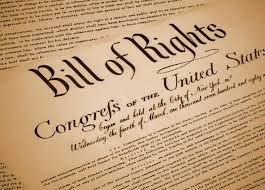
FACTS ON THE U. S. BILL OF RIGHTS
G'day folks,
Welcome to some facts on the US bill of Rights. The first 10 amendments to the U.S. Constitution, known collectively as the Bill of Rights, became law on December 15, 1791. Celebrate its birthday with eight facts about its roots, ratification and legacy.
1.Why was the Bill of Rights tacked onto the Constitution just three years after its ratification in June 1788? Essentially, anti-Federalist delegates objected to the proposed draft, arguing that it provided a framework for a new centralized government but failed to safeguard individual liberties and states’ rights. They finally agreed to ratify the Constitution on the condition that Congress amend the document to include these protections.
2.While drafting the Bill of Rights, James Madison drew heavily on the Virginia Declaration of Rights, written by George Mason and ratified shortly before the Constitution of Virginia in June 1776. Considered the first constitutional protection of individual rights, it also provided a blueprint for the U.S. Declaration of Independence and France’s Declaration of the Rights of Man and of the Citizen.
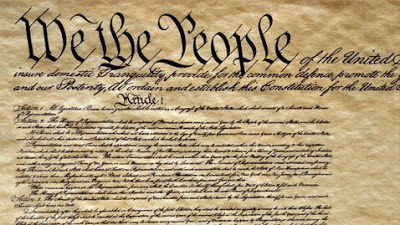
3.Since America’s founding fathers had just spent years fighting for independence from Britain, it might seem ironic that an English law—the Bill of Rights of 1689—served as another inspiration for the U.S. Bill of Rights. The two documents share a number of guarantees, including the right to petition and protection again “cruel and unusual punishments.”
4.James Madison was an unlikely author of the proposed amendments that eventually became the Bill of Rights. He initially argued that the Constitution itself sufficiently restricted the federal government and that Americans inherently enjoyed natural rights even in the absence of laws ensuring them. Madison’s mentor Thomas Jefferson, who was then serving as ambassador to France, helped convince him of their necessity in 1789.
5.Despite its seemingly inclusive wording, the Bill of Rights did not apply to all Americans—and it wouldn’t for more than 130 years. At the time of its ratification, the “people” referenced in the amendments were understood to be land-owning white men only. Blacks only received equal protection under the law in 1868, and even then it was purely on paper. Women couldn’t vote in all states before 1920, and Native Americans did not achieve full citizenship until 1924.

6.The original Bill of Rights included 12 amendments, but only 10 became law in 1791. One of the omitted articles, which deals with the size of electoral districts, has yet to be ratified. The other, which prohibits pay raises for Congress members until the next election takes place, was ratified in 1992 as the 27th Amendment.
7.George Washington commissioned 14 handwritten copies of the Bill of Rights—one for each of the original 13 colonies and one for Congress. Twelve of the originals survive to this day. North Carolina’s copy disappeared during the Civil War when a Union soldier took it home as a souvenir; it resurfaced in 2003 thanks to the efforts of an undercover FBI agent.
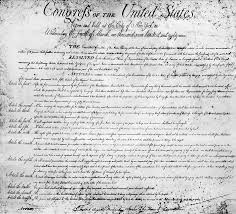
8.One hundred fifty years after the Bill of Rights became law, President Franklin D. Roosevelt called on the American people to observe December 15 as Bill of Rights Day. Just days after he made his speech, the Japanese attacked Pearl Harbor and celebrations were cancelled. Though relatively obscure, it remains a federal holiday.

Clancy's comment: Sadly, Australia does not have such a thing.
I'm ...


Published on March 12, 2016 14:32
March 11, 2016
12 March 2016 - 'MISTER RAINBOW' - New Release - Clancy Tucker
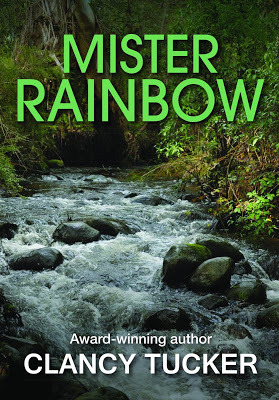
'MISTER RAINBOW'
- New Release -
A novella about the environment,
fishing and returned soldiers
G'day folks,
Well, it's time to release my third novella.
ORIGINS OF THE STORY
This story was written some years ago, inspired by a wonderful town in which I lived and became very involved for ten years. Sadly, the town was almost completely decimated during the Black Saturday bushfires in 2009, and many friends lost their lives. However, it has risen from the ashes and become a very modern township. So, what was it about this town that appealed to me? Simple. It was one of the cutest towns in my State, made famous many decades ago as a stopping-off point for those heading from Melbourne to Woods Point in search of gold - The Old Yarra Track. Not only was it a beautiful town, but the entire region was laden with small rivers and streams, perfect for catching brown and rainbow trout. It was also a magnificent place to take photographs. And, that is exactly what I did every spare moment I had - fished and took photographs.

DEDICATION
This story is dedicated to those who lost their lives in Victoria, Australia, during the horrendous ‘Black Saturday’ bushfires – 7th of February 2009. ‘Mister Rainbow’ is based on Marysville; a town in which I lived, fished, photographed and loved for ten wonderful years.
HERE IS THE BLURB:
Maddie and Toby love fishing, and live in a small mill town where people are dying from ‘Mill Flu’. Keen to catch the biggest rainbow trout ever, ‘Mister Rainbow’, they disobey orders, fish in the ‘Big Pool’ and find a recluse living in a shack in the bush. Maddie falls into the big pool and almost drowns, but is saved by the recluse. Maddie becomes ill, but Toby continues to fish and finds people pumping toxic waste into the Rainbow River. He contacts the Environment Protection Authority and the police, and investigations begin.
Toby learns that the old recluse is Colonel Bolt, a former soldier who was highly-decorated during the Vietnam War, and an amazing artist who sketches pictures of his war memories. The colonel collapses near his shack, Toby finds him and arranges his transport to hospital. Finding two war medals in his shack, Toby e-mails the army and tells them of the colonel’s plight. Will the army respond?
Maddie and Toby enter one of Colonel Bolt’s sketches in an art competition, selling Mister Rainbow’s Magic Bait at a local market to earn the entry fee. Then, Toby goes missing. Desperate to find her fishing partner, Maddie calls Colonel Bolt for help. Will they find Toby alive? Will the colonel win a prize in the art competition, and will they catch Mister Rainbow?

WHO IS THE STORY SUITABLE FOR?
This story was written for late primary school and early high school kids, but anyone might enjoy it. As I said, it is about the environment, fishing and returned soldiers; three things I've always been concerned about. Many of my closest friends happen to be returned soldiers; most of them Vietnam Veterans. So, the two main issues in this story are the concern my two main characters, Maddie and Toby, have for their environment, and also another major character, Colonel Bolt, who just happens to be a Vietnam Veteran who has become a recluse.
A FEW EXCERPTS FROM THE BOOK:
"Maddie had a good feeling about her new bait. It smelt awful, but it had all the stuff that fish loved. She’d made it the night before to prove that she was as good as Toby when it came to fishing. However, her mother hadn’t been all that impressed when she walked into the kitchen and saw what Maddie was piling into her precious food blender. Maddie chuckled, recalling the look on her mother’s face, and what her mum said at the time, “Maddie, what in the heck are you making?” Still grinning, she rode down the driveway and out onto the road, but her fishing partner had already headed off."
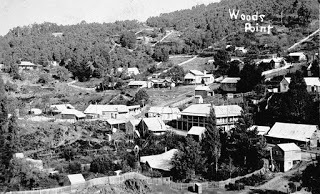
‘Do ya reckon them dead fish are comin’ from the Rainbow River … Or, comin’ from that other river?’
The man stood up, took his daughter by the hand and clutched his water samples. ‘We’re not sure. Could be either. That’s why I’m here taking these samples.’
Toby looked upstream. ‘Nah, it’s gotta be the Fernshaw River. Hell, this is the mighty Rainbow. The water comes from way up there in the Great Dividing Range,’ he said, pointing towards a huge mountain range in the distance. ‘How would toxic stuff get in the Rainbow? It’s just gotta be the Fernshaw River that’s killin’ ‘em,’ Toby concluded.
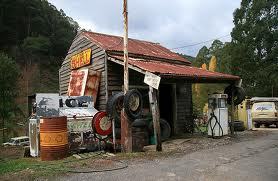
The two of them crouched behind the tree, watching and waiting. The old shack was a rough-looking place made of old, corrugated iron sheets. On the roof, was an odd-looking thing that spun; some type of air vent. The door looked like any normal house door, but some of the paint had peeled. On either side of the door, were two solid, wooden benches.
Maddie soon gripped Toby’s arm. ‘Look, Tobe,’ she whispered. ‘There’s the old hippie.’ Toby remained silent. He watched as a man appeared from the bush, sat on a log and stared at the ground. ‘What’s he doing, Tobe?’ ‘Dunno. Let’s just stay here and watch.’ Toby and Maddie sat on the ground and peered at the man who’d now buried his head in his hands and begun to cough. At first, it was a light cough. Then, he started to cough wildly; almost bark.‘He’s got a real bad cough,’ Maddie said as the man coughed loudly and spat on the ground.
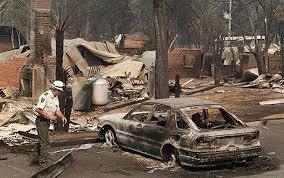
‘Hey, Mr Bolt. How come you live way out here?’ Maddie asked. The man hesitated for a few seconds before he responded. ‘It’s a long story.’ Maddie looked at Toby and raised her eyebrows, but Toby remained quiet.‘What do you do all day? Must get pretty lonely out here all alone, Mr Bolt,’ she added. The man popped half a muesli bar into his mouth, crossed his legs and folded his arms. ‘I go for long walks, go fishing, hunting … And, sometimes I sketch.’ ‘Sketch?’ Maddie blurted.‘Yep, draw things I can’t seem to forget,’ he said, coughing loudly. ‘Could … Could we see some of ya stuff, Mr Bolt? Ya know, ya sketches?’ Toby asked.

Toby dashed to his room, turned on his computer and was soon staring at the same website he’d found the night before. ‘There it is,’ he murmured. The screen flipped over and he found himself staring at the website for the Vietnam Veterans Association. He searched the page and carefully scrolled down, looking for one particular item. Finally, he found it and clicked on two words, ‘contact us’. The page changed once again. In front of him was a reply e-mail. Toby frowned for a few seconds, thinking about what to write. Then, it came to him. He moved closer to the keyboard and typed the most important e-mail he’d ever sent, writing Top Secret in the subject line, and sending a copy to Maddie’s e-mail address.
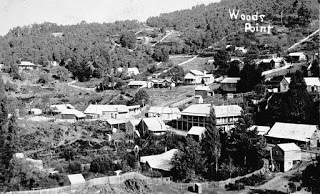
Toby walked through the automatic doors of the hospital and stopped. The place was busier than normal, and his eyes bulged when he saw soldiers in full battle dress. Nervously, he walked to some seats in the foyer and sat down to observe them. He’d never seen soldiers before and found them intimidating. Soon, a patient was wheeled into the foyer in a hospital bed. Straight away, Toby knew who it was. He could tell by the bushy beard. Feeling anxious, he stood up and approached the man in the bed. ‘Hi, Mr Bolt,’ he said, placing both hands on a steel bar that ran along the side of the bed. Two soldiers protectively stepped forward, but Mr Bolt raised his hand.‘It’s okay. At ease. He’s a good friend. Toby, what happened to you?’ The soldiers backed off, but Toby was still nervous in their presence. They looked serious.

Toby pulled his knapsack off, unzipped a side pocket and removed the two, small, blue boxes, containing medals. ‘Hey, ya can’t leave town without these. I wasn’t snoopin’ around in ya shack … Honest. I took ‘em ‘cause I was scared that someone might knock ya stuff off,’ said Toby, gently placing the two medals on his bed.
Mr Bolt glanced at the small boxes. He then stared seriously at Toby and saluted him. ‘You did the right thing … Thanks,’ he said. ‘Hey, how’s young Maddie going?’
‘She’s not real good, but I found out why you and Mad got sick.’
‘How’s that?’
‘Someone’s been puttin’ toxic stuff in the Rainbow River.’
‘Really?’
‘Yep. Caught ‘em doin’ it today. I took the cops and the EPA up there and showed ‘em … Even got the registration number of their truck. That’s why all the fish were dyin’.’

Maddie wasted no time. ‘Hi … I’m Maddie Stinton. This is an emergency. I need to speak to Colonel Bolt urgently. He’s a patient there,’ she said.
‘Hold on please,’ said the switchboard operator. Maddie waited nervously. ‘Sorry. Colonel Bolt is resting and can’t be disturbed,’ came the woman’s reply. Maddie’s eyes rolled back. ‘Resting? Can’t be disturbed? Hey, this is urgent … Really urgent,’ she snapped, as another brilliant idea popped into her head; one that would attract Colonel Bolt’s attention. ‘Please just tell the colonel that Mister Rainbow needs help … And, I bet he’ll talk to me,’ Maddie pleaded. ‘One moment please. I’ll try my best. Was that … Mister Rainbow?’‘Correct. That’s him. Thank you,’ Maddie politely replied.

‘Master Sergeant! I want a rescue chopper ready to go to Camberville. Forget the paperwork. Just do it!’ Mr Bolt bellowed at the top of his voice. Maddie was inspired by his short, sharp orders. She listened intently as he spoke to someone on another phone. What he said next was simply gob smacking. ‘Hey. I’ve got a great kid stuck down a mine shaft. Are you telling me that I can’t get him out? Toby saved my life. He and his fishing partner have shown me more humanity and compassion than the entire army has since I got back from Vietnam. Don’t you worry about the Brigadier … I’ll deal with him. Just get that bloody chopper in the air.’

Clancy's comment: So, there ya go, folks. This would be an ideal gift for your kids or grandkids. Interested? Head up to the top right hand side of this page, Clancy Tucker's Bookshop, and purchase a paperback or e-Book. They are not expensive, and all paperbacks are signed and come with a matching bookmark. Paperbacks and e-books are also available via:
MORRIS PUBLISHING AUSTRALIA
Oh, by the way, I did mention that I have a few Vietnam Veteran mates. Well, on my recent trip to Vietnam, I met up with one of them and his family in Hanoi - a long-time mate, Ken Ewin, and we had a top time. Not only, guess who drove a long way to collect me at the airport on my return, and drive me home? Yep, another Vietnam Veteran - Rob Brown.
Love ya work, Ken. Love ya work, Rob.

A few photographs of me dining with a wonderful Thai family in Bangkok, eating superb food from the north-east of Thailand. I gave a copy of this book, and my next novella, 'Kick-Ass Tyler', to two very capable Thai kids, Pearl and Oasis. What a great night. And, I also walked away with two books written by the late Khun Prabhassorn Sevikul; a great writer, poet and human who will be missed by many in the Kingdom of Thailand.
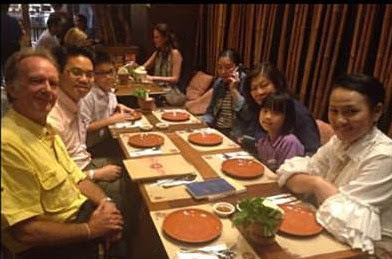

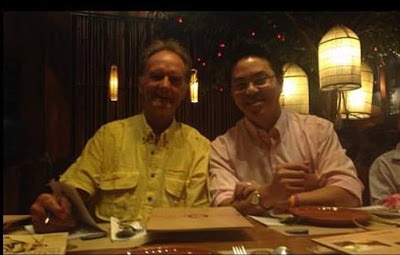
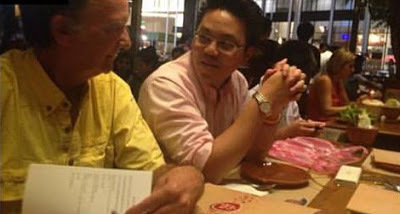
 Pax vobiscum Khun Prabhassorn Sevikul!
Pax vobiscum Khun Prabhassorn Sevikul! I'm ...


Published on March 11, 2016 14:39
March 10, 2016
11 March 2016 - MOVING PICTURES

MOVING PICTURES
G'day folks,
Welcome to some more creative pictures, made by some clever people.















Clancy's comment: Damn amazing, eh? I loved the cats and mice, and the hundreds and thousands falling on the cakes.
I'm ...


Published on March 10, 2016 14:12



